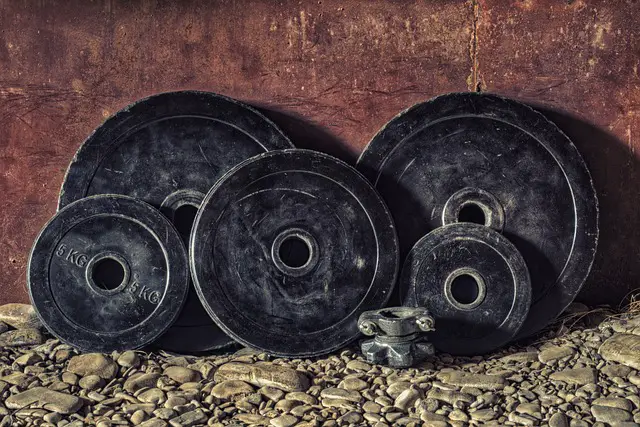Do you remember that one kid in high school who had arms like tree trunks and could bench press a truck? Yeah, me too. And I also remember being told by my grandmother that if I lifted weights, I would stunt my growth and end up looking like a human version of the Eiffel Tower. But is there any truth to this myth or was it just a ploy to keep us scrawny kids from hitting the gym? Let’s find out, and maybe we can finally put this old wives’ tale to rest. But first, let me grab my dumbbells and my stretching cream. Just in case.
Contents
- 1 1. The Enduring Myth: Do Weightlifting and Stunted Growth Really Go Hand in Hand?
- 2 2. How Childhood Growth Works: An Introduction to Bone, Joint, and Muscle Development
- 3 3. Debunking the Stunted Growth Myth: Scientific Evidence on Weightlifting’s Effect on Growth
- 4 4. Factors to Consider: Age, Maturity, and Proper Training for Safe and Effective Weightlifting
- 5 5. Conclusions and Implications: Building Strong, Healthy Bodies for the Long-Term
- 6 Don’t Believe the Hype!
1. The Enduring Myth: Do Weightlifting and Stunted Growth Really Go Hand in Hand?
Myth Busted: Does Weightlifting Really Stunt Your Growth?
Like the Tooth Fairy and Santa Claus, we’ve all grown up hearing the myth that weightlifting can stunt your growth. But let’s be real for a moment here: if lifting weights made you short, there would be a lot more hobbits and fewer basketball players walking around.
The truth is, weightlifting doesn’t stunt your growth – at least not directly. In fact, the only way it could hinder your growth is if you injure yourself while lifting and end up with a messed-up spine. So if you’re worried about height, take it easy with the weights, but don’t blame them for your lack of inches. Instead, maybe you should focus on picking taller parents next time.
On top of that, weightlifting actually has a ton of benefits that can help you grow in other ways. For starters, it strengthens your bones and muscles, which can make you less injury-prone and even improve your posture. Plus, it boosts your confidence, which is always a good thing when you’re trying to conquer the world (or just your next math test).
So, the moral of the story?
- Weightlifting won’t turn you into a garden gnome
- It might actually make you taller (or at least feel taller)
- But for the love of all that is good, please lift responsibly and with proper form
And with that, our myth-busting mission is complete. If you’ll excuse us, we’re off to pump some iron and maybe gain a few inches (or at least feel like we have).

2. How Childhood Growth Works: An Introduction to Bone, Joint, and Muscle Development
Growth is an unusual phenomenon that is commonly observed among children as they continue to develop physically and mentally. But have you ever asked yourself how these changes happen? Do you reckon that your child’s growth is due to the extra glasses of milk or grandma’s special recipe for building strong bones?
Generally, growth involves a process known as bone growth, joint development, and muscle growth. Though it seems straightforward, it’s not. Here’s why:
- Bones: Growing bone starts before babies are born and continues until they’re in their early 20s (I know, right?).
- Joints: Growth plates (cartilage near the ends of bones) are responsible for bone elongation during puberty and can be affected by growth disorders.
- Muscles: They don’t just pop out of nowhere. They become more significant when working against resistance.
There you have it. The developmental intricacies of bone, joint, and muscle growth. Hey, knowing is half the battle, right?
3. Debunking the Stunted Growth Myth: Scientific Evidence on Weightlifting’s Effect on Growth
If you’re a parent who’s been concerned about the prospect of your child lifting weights, you’re not alone. The stunted growth myth has been around for ages, but we’re here to tell you it’s just that, a myth! Before you start hiding all your kid’s dumbbells, let’s take a closer look at what science has to say about weightlifting and growth.
First of all, let’s get one thing straight, the idea that weights can stunt your growth is completely unfounded. Studies have shown that there is no correlation between weightlifting and stunted growth. So, no, your child will not remain a shrimp forever just because they’ve been hitting the gym.
In fact, weightlifting can actually be beneficial to a child’s growth and development. It can help strengthen bones and muscles, improve posture, and promote healthy weight gain. Of course, it’s important to ensure they’re not overdoing it and lifting weights that are too heavy for their age and ability. As with any physical activity, proper technique and supervision are key to preventing injury.
- Myth: Weightlifting stunts growth.
- Fact: There is no evidence to support this claim.
- Benefits: Weightlifting can improve posture, promote healthy weight gain, and strengthen bones and muscles.
4. Factors to Consider: Age, Maturity, and Proper Training for Safe and Effective Weightlifting
When it comes to weightlifting, age is just a number. Well, actually, it’s more like a range. You don’t want to start lifting weights when you’re a baby, but waiting until you’re 90 might not be the best idea either. Ideally, you should be somewhere in the 16-70 range. But if you’re a toddler who can lift a dumbbell and a ninety-year-old who deadlifts like a champ, more power to you!
Now, maturity is a whole different story. And I’m not talking about being able to resist eating a second donut. I’m talking about being mature enough to handle the responsibility of weightlifting. It’s not just about putting the bar up and down; it’s about knowing your limits, being disciplined, and realizing that grunting doesn’t make you lift any more weight. So, make sure you’re mentally ready to commit to weightlifting before trying it out.
Last but not least, proper training is essential when it comes to weightlifting. Sure, you might be able to lift the weight, but can you do it without injuring yourself? And no, saying “I’ll just put some ice on it” isn’t a legitimate first-aid plan. Make sure you have a qualified trainer who can teach you the proper form for each exercise, provide spotting when needed, and help you progress safely and effectively. So, find a good trainer and remember, the only gains that matter are the ones you make without the use of crutches.
5. Conclusions and Implications: Building Strong, Healthy Bodies for the Long-Term
So, what have we learned? Well, for starters, building a strong and healthy body takes time and effort. There really is no shortcut to a healthy lifestyle, unfortunately. However, the good news is that small changes can make a big difference! Here are some key takeaways to keep in mind:
- Consistency is key: Stick to a routine, even when you don’t really feel like it. Eventually, it’ll become a habit.
- Feed your body right: Eating healthy doesn’t have to be boring. Find foods you enjoy and experiment with different recipes.
- Don’t forget to rest: Recovery is just as important as workouts! Take time to give your body the rest it needs.
In terms of implications, well, it’s pretty clear that the benefits of a healthy lifestyle are countless. Aside from the obvious physical benefits, like increased energy and lowered risk of disease, you’ll feel better mentally, too! Exercise and good nutrition have been proven to reduce stress and improve mood. Who doesn’t want that?
Ultimately, building a strong and healthy body is an investment in yourself. It will pay off in the long run, and you’ll thank yourself for it. As the saying goes, “health is wealth”. So, let’s all strive to be rich, shall we?
Don’t Believe the Hype!
And there you have it, folks – the myth has been busted! Weightlifting doesn’t stunt your growth. In fact, it might just make you taller if you’re constantly standing up to adjust your weights (we kid, we kid).
But honestly, it’s time to throw this silly myth out the window and embrace the benefits of weightlifting. It’s not just about getting ripped, it’s about being stronger, healthier, and more confident in your own body.
So go ahead, hit the gym with a vengeance and lift those weights like a boss. But if you happen to grow a few inches taller, don’t say we didn’t warn you.








Leave A Comment